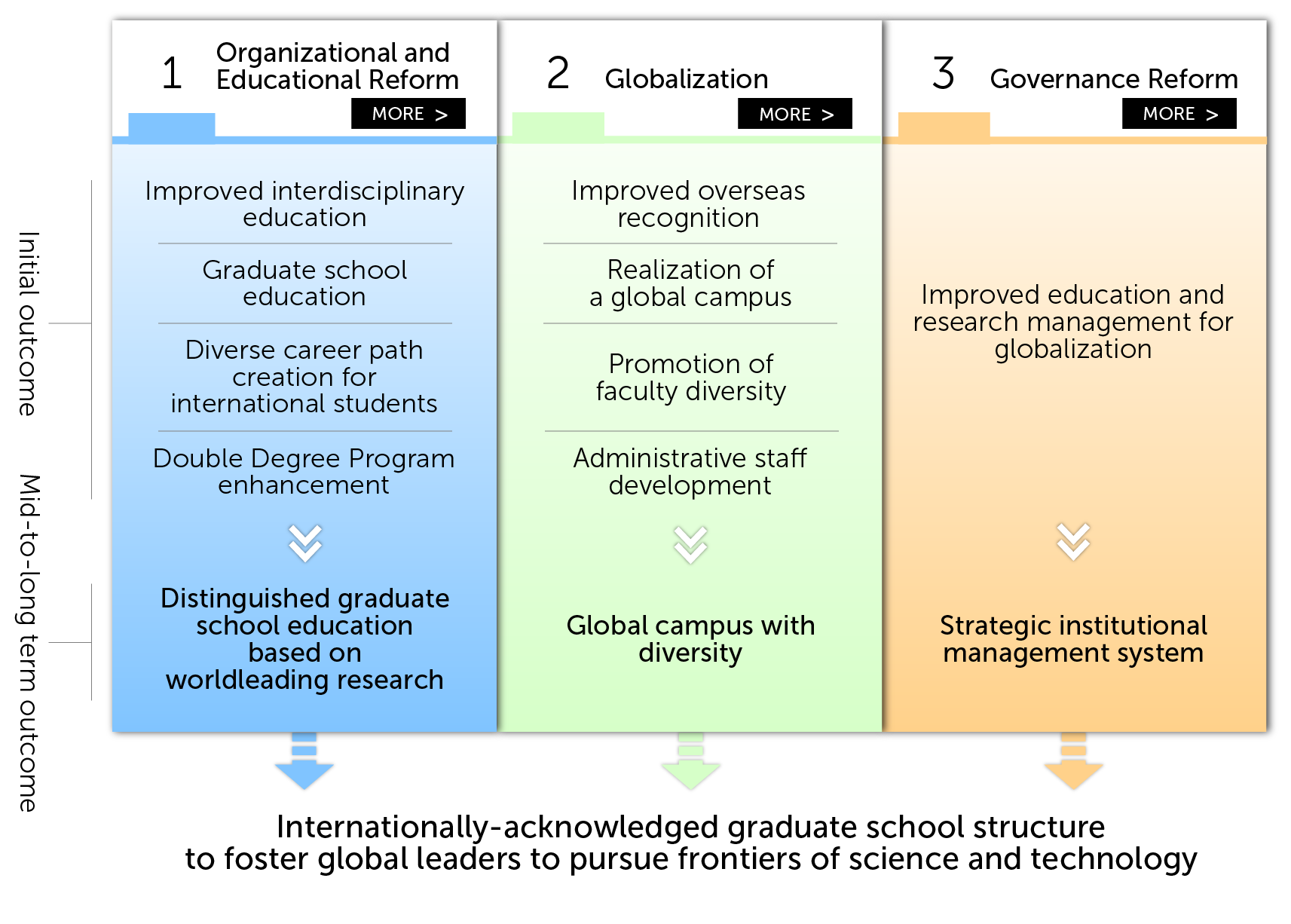




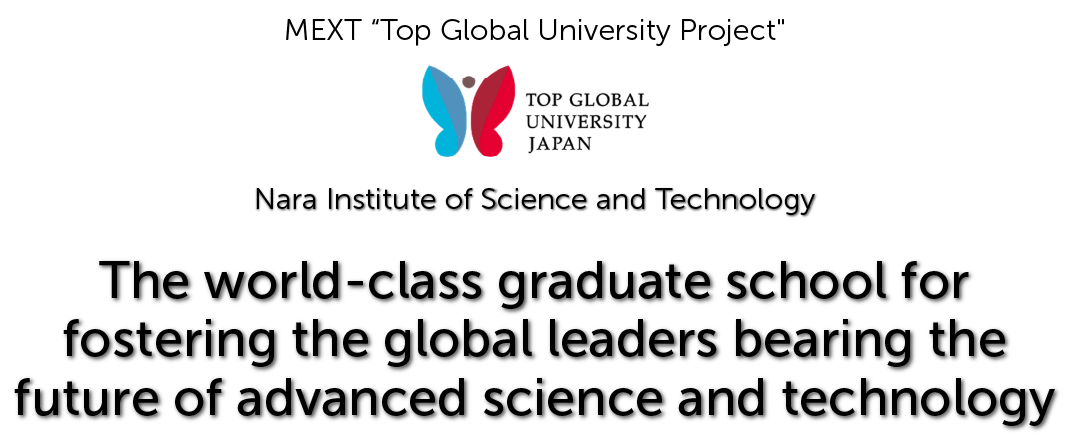






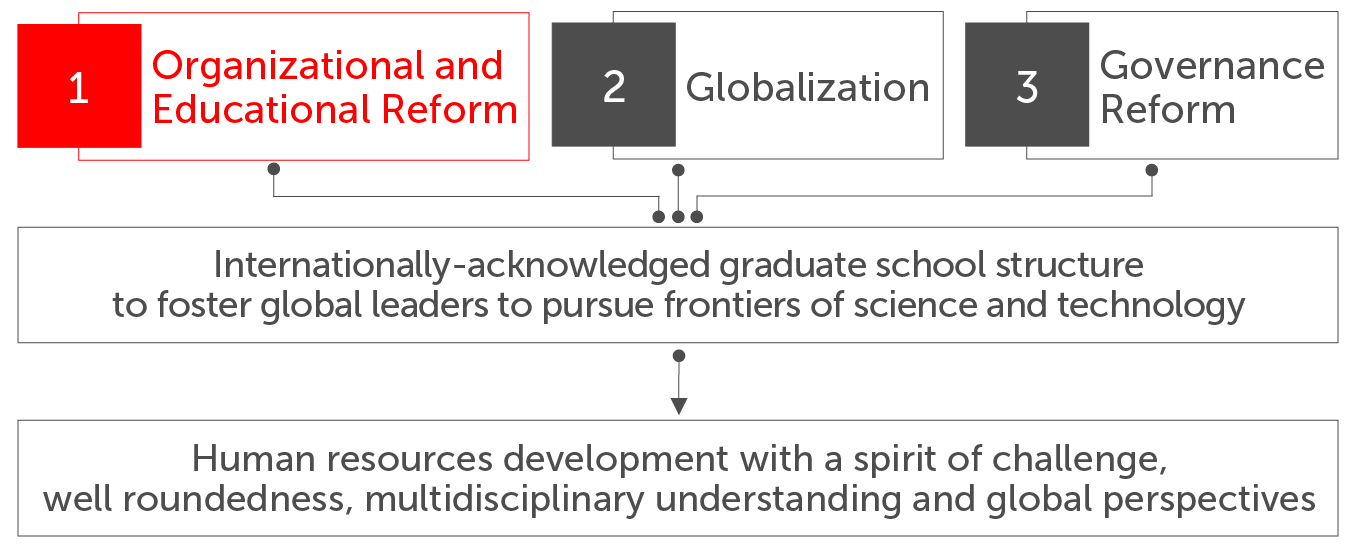




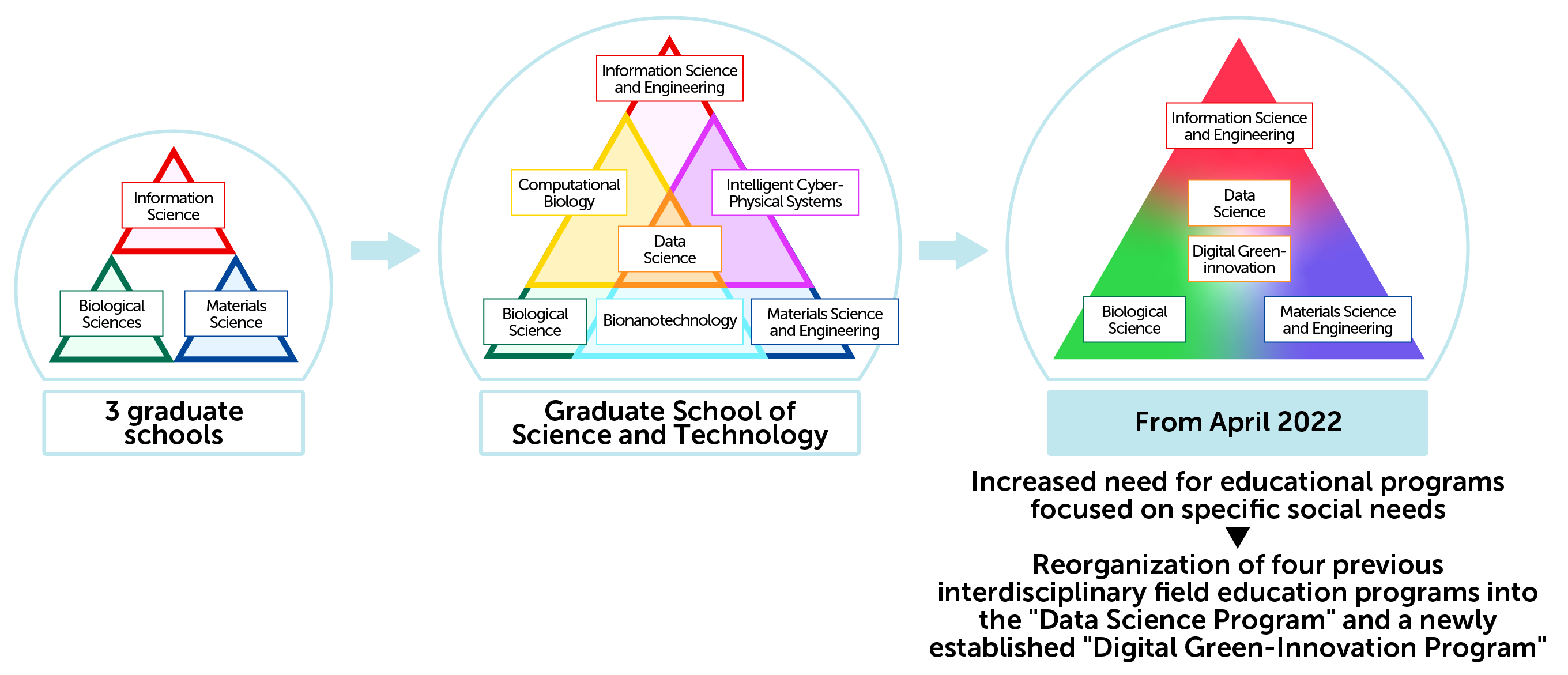
♦ Reorganize its three graduate school structure one year ahead of schedule to create a single graduate school with the aim to establish an education and research system capable of responding to the Science and Technology Advancement and new social demands ♦ Establish five education programs (interdisciplinary educational curriculum of the two current fields) to foster globally active human resources with broad and highly specialized knowledge of advanced science and technology

♦ Implement an internationally recognized curriculum (PBL learning subjects) and an evaluation system (GPA, rubric criteria). Allow students to acquire degrees in all educational programs through classes and research guidance provided in English

♦ Provide career consultation and career guidance sessions in English to develop an understanding of the distinctive features of the Japanese job-hunting process
♦ Support students in acquiring the Japanese proficiency level required by Japanese companies by conducting extensive Japanese language education in the regular curriculum

♦ Strengthen and actualize a double degree program for systematic human development with an emphasis on the ability to work in international joint research and international collaboration
<Achievements (till October 2023)>
Number of partner institutions: One (2010) → 8(2023)
Number of students dispatched and accepted: 15 accepted, 10 dispatched

♦ Reorganize its three graduate school structure one year ahead of schedule to create a single graduate school with the aim to establish an education and research system capable of responding to the Science and Technology Advancement and new social demands ♦ Establish five education programs (interdisciplinary educational curriculum of the two current fields) to foster globally active human resources with broad and highly specialized knowledge of advanced science and technology


♦ Implement an internationally recognized curriculum (PBL learning subjects) and an evaluation system (GPA, rubric criteria). Allow students to acquire degrees in all educational programs through classes and research guidance provided in English

♦ Provide career consultation and career guidance sessions in English to develop an understanding of the distinctive features of the Japanese job-hunting process
♦ Support students in acquiring the Japanese proficiency level required by Japanese companies by conducting extensive Japanese language education in the regular curriculum

♦ Strengthen and actualize a double degree program for systematic human development with an emphasis on the ability to work in international joint research and international collaboration
<Achievements (till October 2023)>
Number of partner institutions: One (2010) → 8(2023)
Number of students dispatched and accepted: 15 accepted, 10 dispatched

| Name of University | Country / region | Year of Agreement | Students accepted and dispatched | |
|---|---|---|---|---|
| 1 | National Yang Ming Chiao Tung University | Taiwan | 2015 and 2017 | Accepted: 1 / Dispatched: 1 |
| 2 | Chulalongkorn University | Thailand | 2020 | - | 3 | Kasetsert University | Thailand | 2021 | Accepted: 3 |
| 4 | Universite Paul Sabatier | France | 2014 | Accepted: 3 / Dispatched: 4 |
| 5 | Universite Paris-Saclay | France | 2018 | Accepted: 2 / Dispatched: 4 |
| 6 | Sorbonne University | France | 2019 | - |
| 7 | Ulm University | Germany | 2017 | Accepted: 2 |
| 8 | Macquarie University | Australia | 2019 | Dispatched: 1 |

| Name of University | Country / region | Year of Termination | Students accepted and dispatched | |
|---|---|---|---|---|
| 1 | University of Oulu | Finland | 2010 | Accepted: 2 |
| 2 | Unitec Institute of Technology | New Zealand | 2015 | Accepted: 1 |
| 3 | University of Malaya | Malaysia | 2015 | Accepted: 1 |

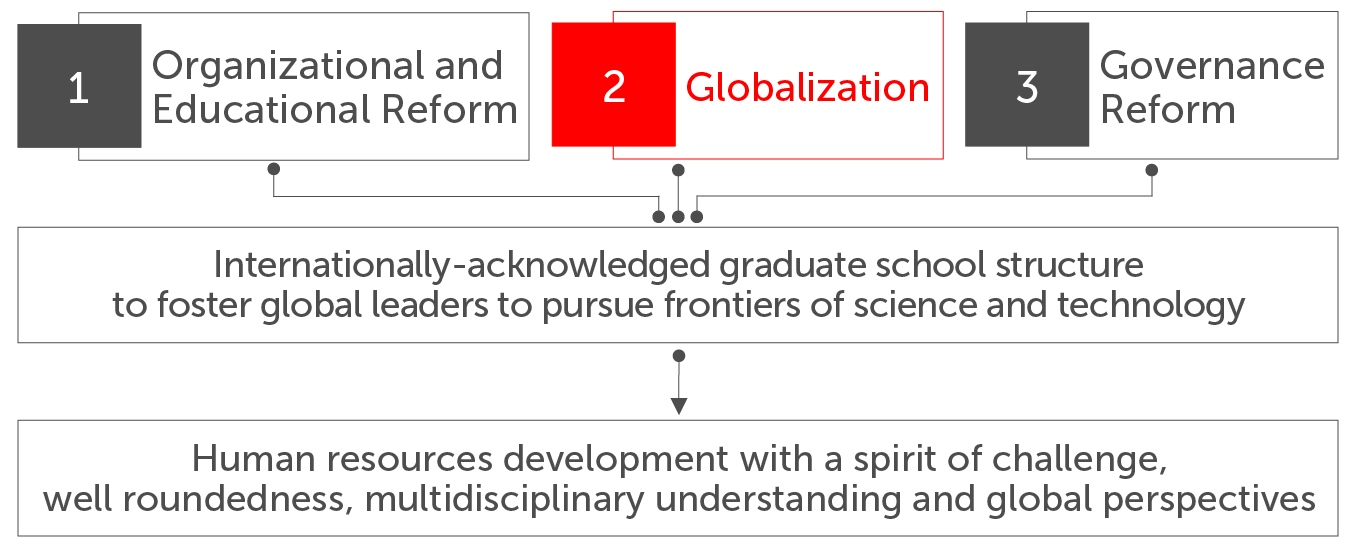




♦ Develop student recruitment activities and visit partner institutions, hold symposiums utilizing the NAIST alumni networks and the NAIST global offices at IPB University, Indonesia, and Kasetsart University, Thailand, serving as the activity base

♦ The number of excellent international students significantly increased because of the proactive international student recruitment activities, expansion of international partner institutions
⇒Percentage of international students at the NAIST: *25.2% ← 13.6% (2013)
(Goal percentage for 2023: 23.2%)
♦ Build a support system capable of responding to diverse needs by setting up a Center for International Students and Scholars (CISS) which serves as a one-stop service hub

♦ Faculty members with extensive experience: *49.5% ← 32.9% (2013)
(Goal percentage for 2023: 80.0%)

♦ Technical staff (TOEIC 750+ points): *31.5% ← 14.2% (2013)
(Goal percentage for 2023: 26.9%)
*As of May 1, 2023

♦ Develop student recruitment activities and visit partner institutions, hold symposiums utilizing the NAIST alumni networks and the NAIST global offices at IPB University, Indonesia, and Kasetsart University, Thailand, serving as the activity base

♦ The number of excellent international students significantly increased because of the proactive international student recruitment activities, expansion of international partner institutions
⇒Percentage of international students at the NAIST: *25.2% ← 13.6% (2013)
(Goal percentage for 2023: 23.2%)
♦ Build a support system capable of responding to diverse needs by setting up a Center for International Students and Scholars (CISS) which serves as a one-stop service hub

♦ Faculty members with extensive experience: *49.5% ← 32.9% (2013)
(Goal percentage for 2023: 80.0%)

♦ Technical staff (TOEIC 750+ points): *31.5% ← 14.2% (2013)
(Goal percentage for 2023: 26.9%)
*As of May 1, 2023

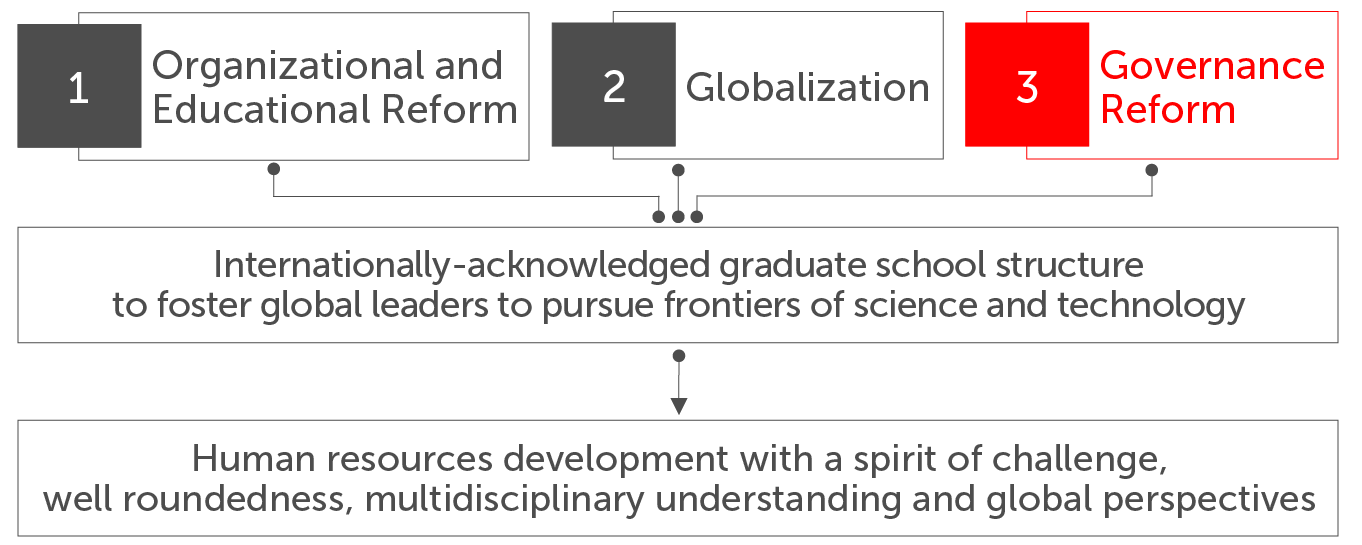




♦ Establish a Center for Strategy and Planning responsible for the future framework of NAIST and education and research strategies (FY 2015)
⇒ Establish a strategic university management system with flexibility and agility
♦ Establish an IR office (FY 2017): Vice president in charge of institutional research (IR)
⇒ Support formulate basic policies for university management through data regarding education and research,
internationalization, finance, industry-government-academia collaboration
♦ Institute for Educational Initiatives (IEI) and Institute for Research Initiatives (IRI) work in tandem to vitalize education and research activities
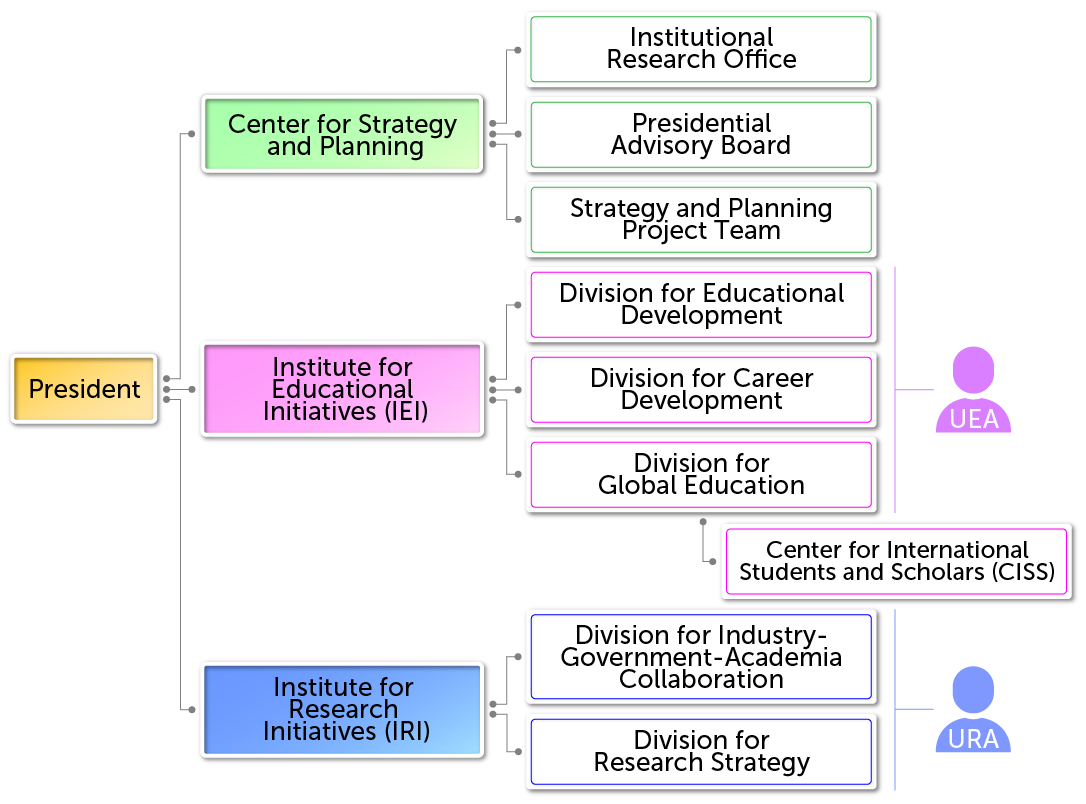

♦ Establish a Center for Strategy and Planning responsible for the future framework of NAIST and education and research strategies (FY 2015)
⇒ Establish a strategic university management system with flexibility and agility
♦ Establish an IR office (FY 2017): Vice president in charge of institutional research (IR)
⇒ Support formulate basic policies for university management through data regarding education and research,
internationalization, finance, industry-government-academia collaboration
♦ Institute for Educational Initiatives (IEI) and Institute for Research Initiatives (IRI) work in tandem to vitalize education and research activities

